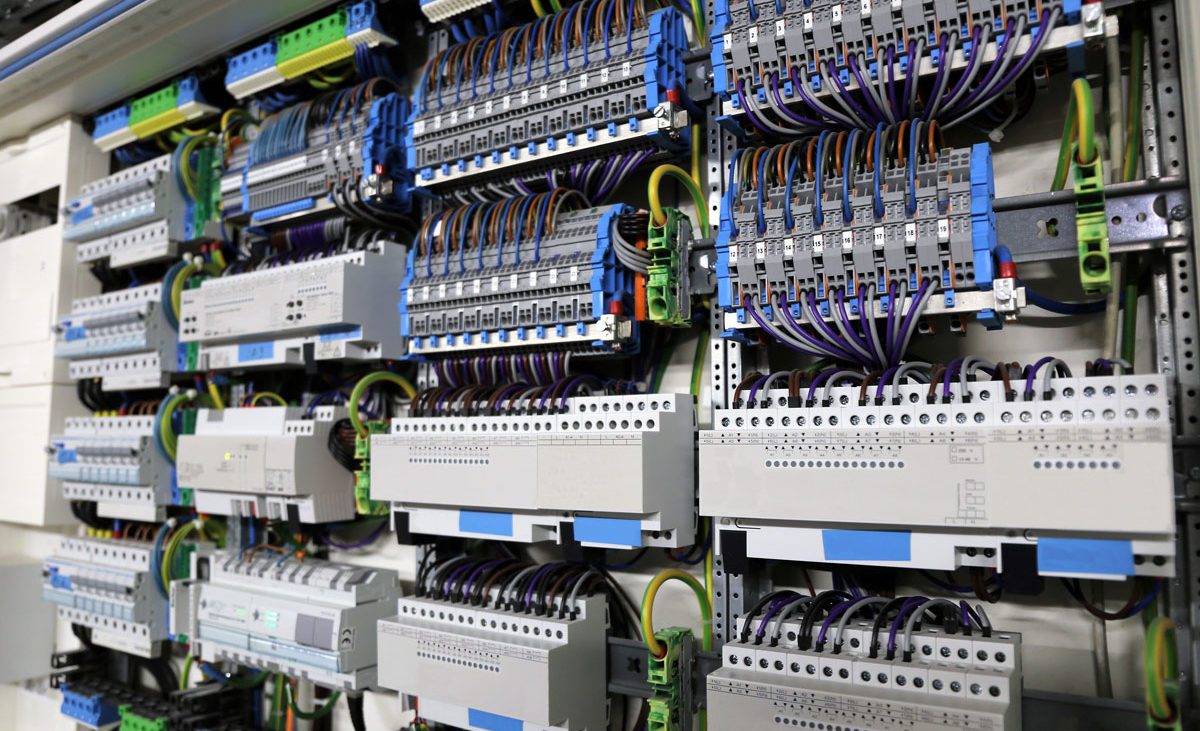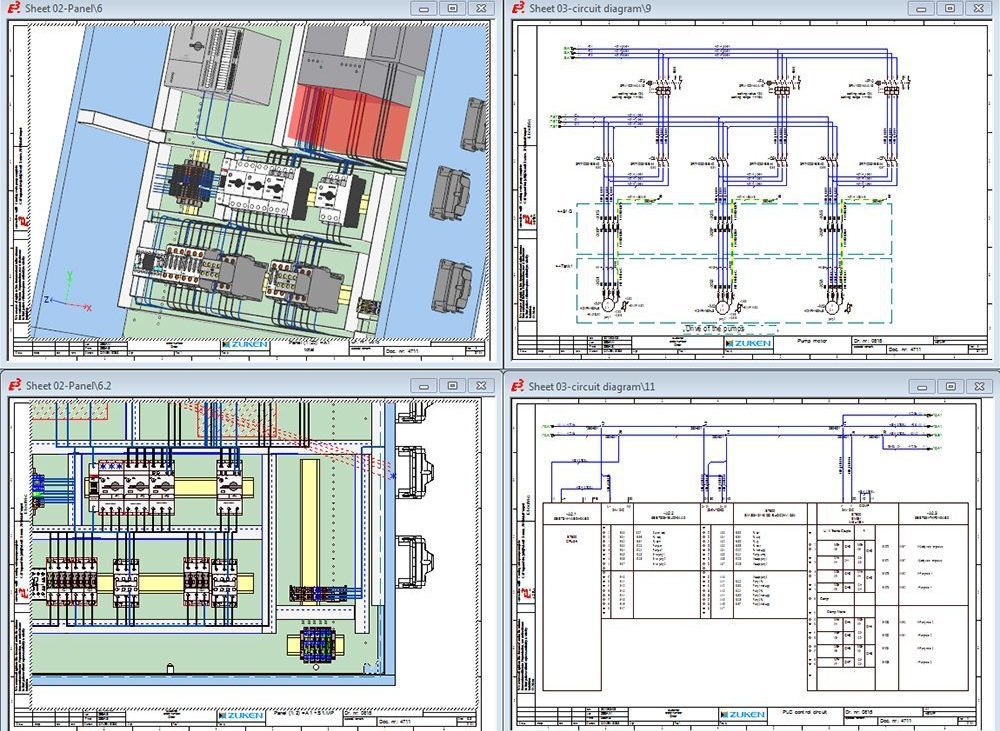Enhancing Industrial Electrical Design for Large-Scale Operations
Enhancing Industrial Electrical Design for Large-Scale Operations
Blog Article
Innovative Electrical Design Solutions for Modern Infrastructure
As city environments grow significantly complex, including modern technologies such as clever grids and sustainable energy sources comes to be critical. These developments not only promise to optimize energy usage but also foster resilience against future demands.
Relevance of Cutting-edge Electrical Design
Ingenious electrical design plays an important role in modern facilities, influencing not just efficiency but also sustainability. As cities develop and the demand for energy boosts, the demand for innovative electric systems becomes extremely important. These systems need to not only fulfill present demands however additionally prepare for future growth and technological advancements.
A well-executed electric design can considerably decrease energy consumption, therefore reducing operational prices and minimizing environmental effect. By incorporating sustainable power resources, such as photovoltaic panels and wind generators, innovative designs can enhance energy self-reliance and durability. Clever grid innovations allow for real-time tracking and administration of power distribution, optimizing performance and minimizing waste.
Safety and security is another important aspect of electrical design. Implementing extensive requirements and advanced innovations can mitigate dangers related to electric failures, ensuring a protected environment for locals and businesses alike. Additionally, ingenious designs help with versatility, allowing infrastructures to integrate emerging modern technologies flawlessly.
Secret Patterns in Electrical Design
As the landscape of electric design remains to develop, numerous essential patterns are shaping the future of the sector. One substantial trend is the integration of wise technology right into electric systems. The spreading of the Net of Points (IoT) has actually made it possible for real-time tracking and control of electric devices, boosting effectiveness and promoting predictive upkeep.
An additional fad is the growing emphasis on modular design. This method allows for scalable and adaptable remedies, allowing framework to adapt to changing requirements without extensive renovations. In addition, the usage of sophisticated simulation tools and Structure Info Modeling (BIM) is becoming progressively common, streamlining the design process and enhancing collaboration among stakeholders.
In addition, innovations in products science are resulting in the growth of lighter, a lot more resilient, and energy-efficient components. This advancement is particularly important for high-performance structures and infrastructure projects.
Last but not least, there is a marked shift in the direction of data-driven decision-making - industrial electrical design. Leveraging data analytics helps designers enhance systems for efficiency and cost-effectiveness. Together, these trends symbolize a transformative era in electrical design, enhancing performance, sustainability, and resilience in modern framework
Sustainable Energy Solutions
Lasting power services are progressively coming to be a critical emphasis in electrical design, showing a more comprehensive dedication to ecological responsibility and resource efficiency. These services intend to reduce environmental effect while enhancing energy intake in different frameworks, from property structures to big commercial centers.
One of the primary methods involves the combination of renewable resource sources, such as photovoltaic panels and wind turbines, right into electric systems. This not only lowers dependency on nonrenewable fuel sources however likewise enhances power resilience. Furthermore, innovative energy storage space systems, such as innovative batteries, allow efficient management and distribution of power, guaranteeing that excess energy produced throughout top manufacturing can be utilized throughout high demand periods.
Moreover, energy-efficient design techniques are being embraced to boost total system performance. This includes making use of energy-efficient lights, cooling and heating systems, and smart structure innovations that keep an eye on and adapt power use this link use based upon tenancy and ecological conditions.
Smart Grid Technologies
The application of lasting energy options normally results in the expedition of clever grid technologies, which play an essential duty in updating electric systems. Smart grids leverage advanced interaction technologies and information analytics to improve the integrity, efficiency, and sustainability of electricity circulation. By incorporating digital modern technology with standard grid facilities, these systems help with real-time tracking, automated control, and enhanced decision-making capabilities.
Among the vital attributes of clever grids is their my blog ability to suit renewable energy sources, such as solar and wind power. This versatility not only lowers dependence on nonrenewable fuel sources however also enables a much more decentralized energy production model. Additionally, clever grids enable demand action programs, where customers can change their energy usage based on real-time rates, thus advertising energy conservation and minimizing peak lots demands.
Additionally, smart grid innovations boost grid durability by enabling quicker recognition and resolution of blackouts, ultimately minimizing downtime. With anticipating maintenance and analytics, energies can maximize operations and improve solution shipment. As cities and areas proceed to advance, wise grid technologies are crucial for building a efficient and sustainable electric infrastructure that meets the demands of modern culture.

Future-Proofing Facilities
To guarantee lasting stability and flexibility, future-proofing framework is vital in the quickly evolving landscape of electric design services. As technology advances and power demands shift, it is important that electrical systems are designed with versatility in mind. This entails integrating scalable options that can fit future upgrades without requiring substantial overhauls.

Additionally, sustainability needs to be a foundation of future-proofed designs. Making use of renewable energy sources, such as solar and wind, and enhancing power performance lower reliance on nonrenewable fuel sources, straightening with worldwide efforts to combat environment adjustment.
Verdict
By prioritizing sustainability, adaptability, and performance, these services deal with the progressing demands of energy systems. The assimilation of smart grid modern technologies and lasting energy options enhances durability and minimizes operational expenses.
A well-executed electrical design can significantly reduce energy consumption, thus decreasing operational prices and reducing Full Report environmental effect. By integrating sustainable power resources, such as solar panels and wind turbines, cutting-edge styles can enhance energy self-reliance and resilience. Furthermore, cutting-edge power storage space systems, such as sophisticated batteries, enable efficient administration and circulation of power, ensuring that excess power created throughout height manufacturing can be used during high demand periods.
Clever grids allow need feedback programs, where consumers can adjust their power use based on real-time prices, consequently promoting energy preservation and lowering peak load needs. (electrical load calculation)
As innovation breakthroughs and power demands change, it is important that electric systems are developed with flexibility in mind.
Report this page